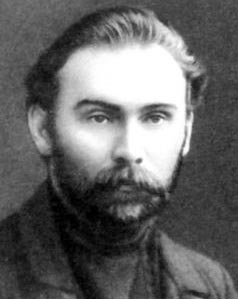As touched on in several earlier posts (e.g. here and here), the building at 44 Lenin Avenue, from its humble beginnings as a church-parish school to its role as local NKVD headquarters to its transformation into commercial and commemorative space itself provides a compelling story. This story runs parallel to many of the main trends of Siberia and Russia’s tumultuous 20th century. For the early years and the later years of the building, the specific microhistory stories are themselves rather obvious. For example, the construction of the building connects to threads of education, religion, architecture, and Tomsk’s role in the Russian empire. The architect, V. V. Khabarov, was involved in numerous other projects–including the construction of the enormous Trinity Cathedral a stone’s throw from the parish school–that helped make Tomsk Siberia’s capital in the late-Tsarist period. Another compelling story is the 1909 murder of the school headmaster. In more recent years, the founding of the Memorial NKVD Remand Prison Museum, or the visit of Solzhenitsyn to the building in 1994, also make compelling stories related to post-Soviet reckoning with Stalinist repression.

Nikolai Klyuev. Photo via Wikimedia commons. Public domain.
Even though the building’s infamy today largely derives from its role as local NKVD headquarters and remand prison during the height of Stalin-era repression, finding a specific, compelling story is proving somewhat difficult. Several famous prisoners spent time there, including philosopher Gustav Shpet and poet Nikolai Klyuev. It is even quite possible authorities shot Kluev in the basement of the building, or in the underground passageway underneath the building’s small square. So, the story could move to biography at this point. Several NKVD bosses who spent time in Tomsk achieved infamy either there or elsewhere, including Ivan Ovchinnikov (the “local Beria”), Ian Krauze (better known for his NKVD work in Leningrad), and Ivan Maltsev. The stories linked to the building seem so male dominated (the basement murder, Solzhenitsyn’s visit, and so on), and biographical stories related to the building during its NKVD incarnation risk continuing a trend. In any case, as a historian, it is my job to find a story that is both compelling but also representative, or, perhaps, exceptional, but exceptional in a way that leads to important information and analysis of the time in question. I wonder what NKVD stories will fall along these lines?